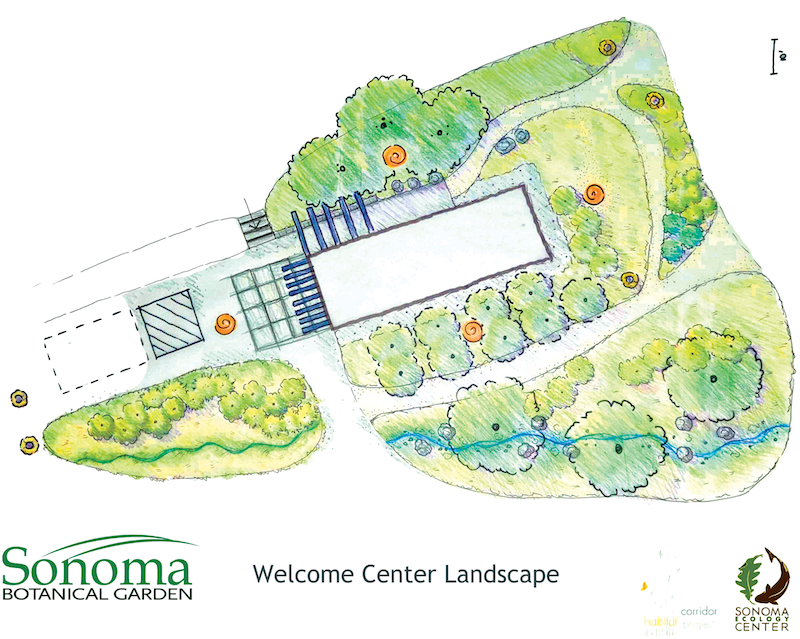The initiative represents a significant stride towards sustainable landscape design and environmental stewardship in Sonoma County.
“We are thrilled to embark on this innovative project alongside Sonoma Ecology Center and Habitat Corridor Project, generously supported, in part, by the Maxwell/Hanrahan Foundation,” says Jeannie Perales, Executive Director, SBG. “This important collaboration leverages the expertise and resources of three esteemed regional organizations dedicated to conservation, education, and ecological resilience and builds significantly on SBG’s recently opened California Oaks Trail and the Garden’s enhanced mission to inspire an appreciation of the beauty and value of California native plants alongside its Asian plant collection.”
“The Maxwell/Hanrahan Foundation is supporting Sonoma Botanical Garden’s new focus that will connect more people with nature and educate them about the beauty, resilience, and importance of our native plant species,” Says Delle Maxwell, Foundation President.
The envisioned garden, which has recently broken ground and will be unveiled to the public in stages over the next several years, will offer visitors an immersive experience to explore and understand the vital role native plants can play in the future of California gardening, demonstrating practical techniques for homeowners, landscape professionals, and community planners to create fire-resistant and water-efficient landscapes that support biodiversity. The garden will also serve as an educational hub with public programs for all ages and special tours designed to deepen the public’s appreciation of California flora.
“Botanical gardens are places of beauty, respite, and appreciation for the natural world,” says Bob Schneider, Design & Implementation Project Manager, Sonoma Ecology Center. “They can also serve as sites for biodiversity and conservation. The Sonoma Ecology Center is excited to work alongside Habitat Corridor Project in growing the Sonoma Botanical Garden’s California native plant collection. California is a biodiversity hotspot, and Sonoma Valley, in particular, is home to a lot of plant diversity. We are excited to showcase more of our region’s native plants, as well as demonstrate fire-wise landscape design principles.”
“This demonstration garden is a unique opportunity to show plant enthusiasts and the public how to use local plants to create a sense of place in the California landscape,” adds April Owens, Executive Director, Habitat Corridor Project. “We are honored to team with Sonoma Ecology Center to diversify the native plant collection at SBG with both plants that are easy to find in the nursery trade and ones that are rare and protected in the Sonoma Valley. The space will provide a substantial amount of habitat garden to support biodiversity where it has been lost in the Sonoma Valley and throughout California. It provides an opportunity to demonstrate for landowners and others the value of adding larger California native shrubs to support butterflies, bees, and birds; the benefit of swales and rain gardens to collect and filter water; and plant design for defensible space.”

